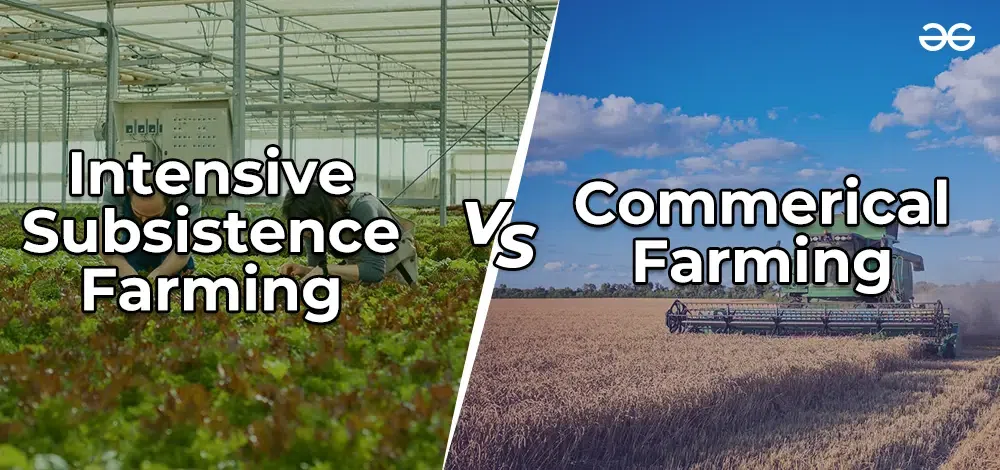A Thorough Check Out the Difficulties and Benefits of Modern Agriculture
Modern agriculture stands at the crossroads of development and sustainability, providing a plethora of possibilities and difficulties. The course onward demands a careful evaluation of these dynamics, welcoming stakeholders to take into consideration the potential for transformative change in agricultural practices and plans.
Technological Advancements in Farming
Innovations such as precision farming, automation, and biotechnology have transformed typical farming practices, allowing for more lasting and profitable procedures. Accuracy agriculture uses GPS modern technology, sensors, and data analytics to enhance field-level monitoring regarding crop farming.
Automation in farming has actually further propelled the market onward, with the intro of autonomous tractors, drones, and robotics. These innovations decrease labor requirements and boost operational speed, enabling timely planting and harvesting. Drones, in specific, provide useful aerial images and data, helping farmers in monitoring crop health and wellness and detecting issues early.
Biotechnology has actually additionally played a pivotal role in progressing farming techniques. Jointly, these technological developments have laid the groundwork for a more lasting and resistant agricultural future.
Environmental Obstacles
Farming deals with several ecological difficulties that threaten its sustainability and efficiency. One of the key worries is the destruction of soil wellness because of extensive farming techniques that deplete important nutrients and bring about erosion. The overuse of chemical plant foods and pesticides better intensifies this concern, polluting water resources and minimizing biodiversity. The lasting stability of agricultural land is endangered, requiring the adoption of even more sustainable methods.
Water shortage is another considerable obstacle, especially in regions where farming heavily relies upon watering. Climate adjustment is escalating this issue, changing rainfall patterns and increasing the regularity of dry spells. Efficient water monitoring systems, such as drip irrigation and rain harvesting, are vital to alleviate these impacts, yet their implementation stays uneven throughout various areas.
Furthermore, agriculture is both a contributor and a victim to environment modification. Addressing these ecological difficulties is important for ensuring a lasting agricultural future.

Economic Impacts
The financial influences of contemporary agriculture are profound and multifaceted, influencing both regional and worldwide markets. Advancements in modern technology and production methods have actually considerably raised agricultural performance, leading to much more effective food supply chains and minimized costs for customers. This enhanced performance has enabled countries to satisfy growing needs, stabilize food prices, and add to financial growth. Moreover, the export of farming commodities has come to be a considerable source of earnings for lots of countries, playing an important role in their financial development.
However, these benefits are not without obstacles. The capital-intensive nature of why not check here contemporary farming calls for significant financial investment in equipment, fertilizers, and genetically customized seeds, which can be monetarily difficult for small farmers. This often causes increased debt and monetary her comment is here susceptability, possibly resulting in the loan consolidation of farms and the loss of country resources. Additionally, international market variations can impact the productivity of agricultural exports, making economies reliant on agriculture susceptible to financial instability.
Additionally, subsidies and profession policies in developed countries can distort market costs, impacting competitive equilibrium and possibly disadvantaging farmers in establishing nations. On the whole, while modern agriculture drives economic growth, it also necessitates browsing complicated monetary landscapes to ensure lasting and fair development.
Social Ramifications
While modern-day farming has actually brought about considerable innovations, it also provides numerous social implications that require factor to consider. As business farming entities significantly control the agricultural landscape, smaller sized ranches frequently have a hard time to contend, leading to the erosion of rural areas and conventional farming techniques.

In addition, there are problems concerning food security and sovereignty. The emphasis on monoculture and genetically changed plants can weaken biodiversity and make food systems a lot more prone to illness and insects. Such practices might also restrict customer selections and minimize the capability of regional areas to useful site control their food sources. As these social implications unravel, it ends up being vital to address them to guarantee lasting and equitable agricultural growth.
Future Instructions
Looking in advance, numerous promising opportunities for modern-day farming could deal with the obstacles faced today while promoting lasting development. Developments in innovation, such as accuracy farming, supply the possible to maximize source usage and rise performance.
Biotechnology additionally holds tremendous promise for the future of agriculture. Genetically modified microorganisms (GMOs) and genetics editing techniques, like CRISPR, could enhance plant strength versus environment adjustment, parasites, and conditions, hence boosting food security. Furthermore, branching out plant ranges to consist of even more nutrient-dense and climate-resilient options could strengthen both eco-friendly security and human nutrition.

Verdict
Modern farming, defined by technological advancements, offers both difficulties and chances. commercial farming vs subsistence farming. Dealing with these complexities calls for a change towards sustainable techniques that balance performance with environmental stewardship and social equity, therefore guaranteeing a resistant future for worldwide farming systems.
Modern agriculture stands at the crossroads of technology and sustainability, presenting a plethora of possibilities and challenges. Furthermore, international market fluctuations can affect the profitability of agricultural exports, making economies reliant on farming susceptible to economic instability.
In addition, the intensive usage of innovation and automation in agriculture has actually led to a reduction in farming employment chances.Looking ahead, a number of encouraging avenues for contemporary agriculture can resolve the difficulties dealt with today while fostering lasting development. commercial farming vs subsistence farming.Modern farming, defined by technological advancements, offers both difficulties and opportunities
Comments on “The Role of Technology in Commercial Farming vs Subsistence Farming Methods”